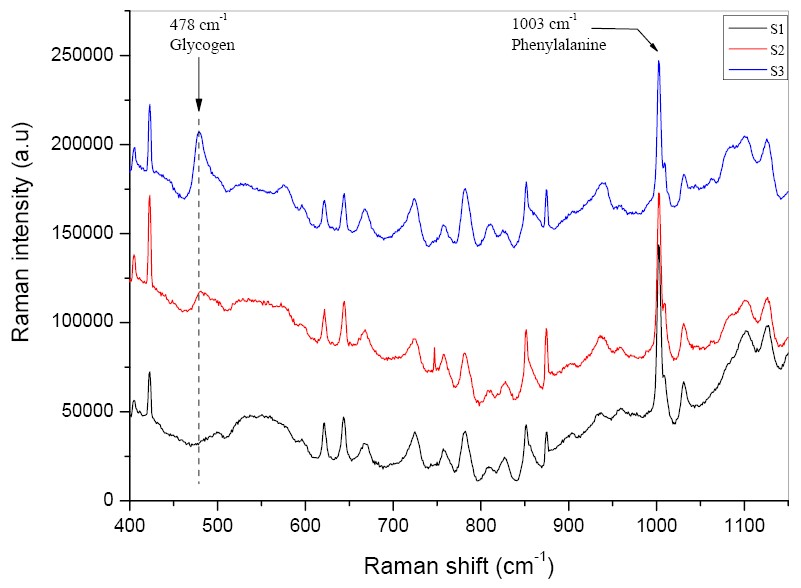Team:Edinburgh/Results/Glycogen3
From 2008.igem.org
| Line 5: | Line 5: | ||
== Glycogen Assay 3 (Quantitative) == | == Glycogen Assay 3 (Quantitative) == | ||
| - | Raman spectroscopy was performed by ''Dr Rabah Mouras''. | + | Raman spectroscopy was performed by '''Dr Rabah Mouras'''. |
=== Experiment Design === | === Experiment Design === | ||
Revision as of 21:05, 27 October 2008
< Previous Entry | Tests and Results Index | Next Entry >
Glycogen Assay 3 (Quantitative)
Raman spectroscopy was performed by Dr Rabah Mouras.
Experiment Design
This quantitative assay compared the amount of glycogen produced by:
- Sample 1 (Control): E. coli cells with no modification to the glycogen production system and grown in a medium which does not promote glycogen formation. These should have a low, basal level of glycogen.
- Sample 2: E. coli cells transformed with the glgC16 BioBrick but grown in a glucose-free medium. These should produce a higher level of glycogen than the control.
- Sample 3: E. coli cells transformed with the glgC16 Biobrick and grown in a high-glucose medium. These should produce the highest level of glycogen.
Results from Glycogen Assay 2 (Qualitative) were in line with these expectations.
The three samples were analysed by Raman spectroscopy. Glycogen results in a peak at a Raman shift of 478cm-1, so the Raman intensity of this peak was measured for each sample.
Results
The results confirm our expectations. Sample 1 cells produced the least amount of glycogen and Sample 3 cells the most. From the intensity of the glycogen peak, the concentration of glycogen in Sample 3 is estimated to be 3~4 times more than in Sample 2.
We may thus conclude that the glgC16 BioBrick results in significantly increased production of glycogen, especially in a high-glucose medium.
 "
"

